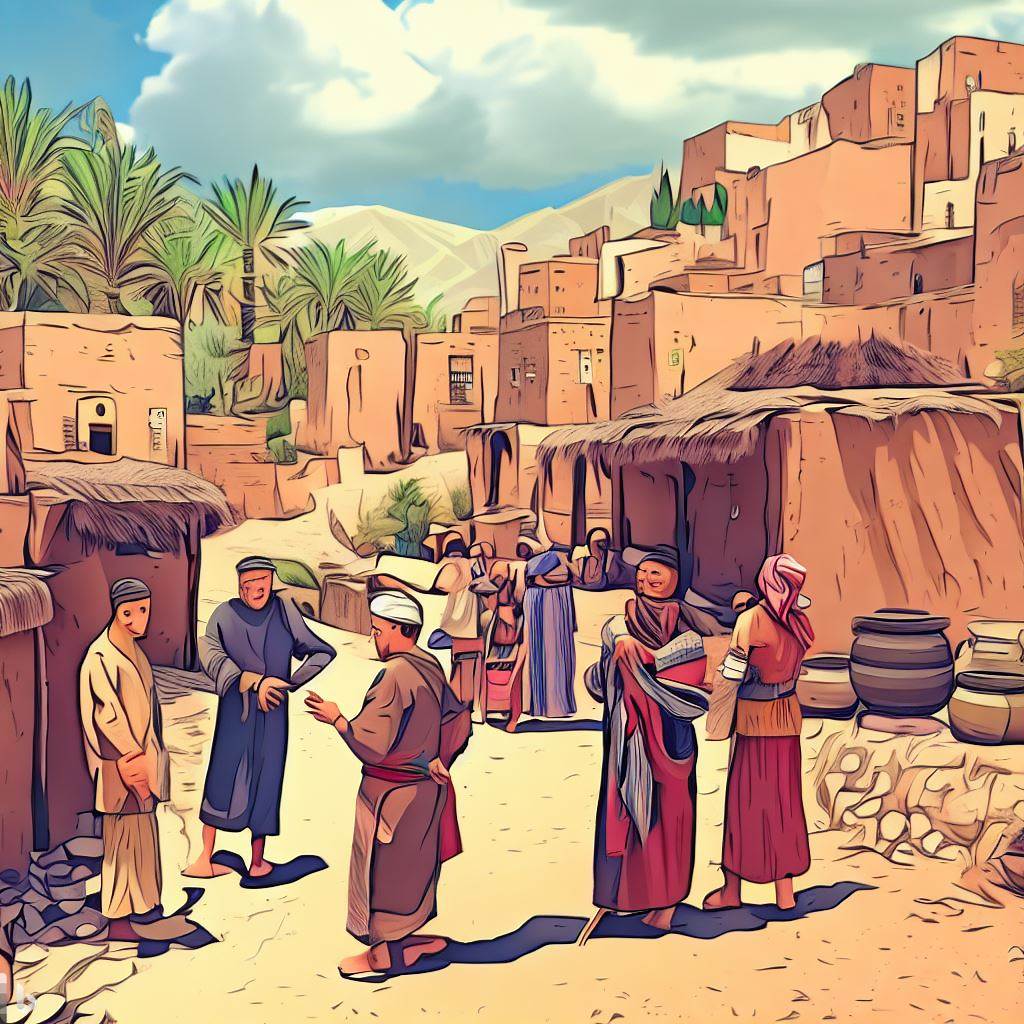
Unravelling the Berber Language: A Deep Dive into its History and Culture
The Berber language, a gem of North Africa, has been the voice of its indigenous people for millennia. Often referred to as Tamazight, this language is a testament to the resilience, culture, and history of the Berber community. Join us as we embark on a journey through time, tracing the origins, evolution, and cultural significance of this ancient tongue.
Table of Contents
- The Origins of the Berber Language
- The Evolution and Dialects
- The Berber Script: Tifinagh
- Berber Culture and Traditions
- Common Misconceptions
- Key Takeaways
- Conclusion
The Origins of the Berber Language
The roots of the Berber language stretch deep into the annals of history. Predating the Arab conquest of North Africa, Tamazight was spoken by the indigenous Berber tribes scattered across the vast landscapes of the region. These tribes, known as the Amazigh, have a history that intertwines with the Pharaohs of Egypt, the Carthaginian empire, and the Roman conquests.
Archaeological findings, including ancient inscriptions, suggest that the Berber language was prevalent even in 2000 BC. These inscriptions, found in the Tassili n'Ajjer mountain range in Algeria, provide a glimpse into the early forms of the language and its script.
As trade routes expanded and empires rose and fell, the Berber language absorbed influences from other languages, including Egyptian, Punic, and later, Arabic. However, despite these influences, it retained its unique character and structure.
Today, the Berber language stands as one of the few ancient languages still spoken in its native region, a testament to the enduring spirit of the Amazigh people.
The Evolution and Dialects
Over the centuries, as the Berber communities spread across different terrains and regions of North Africa, the language evolved into several distinct dialects. These dialects, while sharing a common root, have unique phonetic, lexical, and grammatical features.
The major dialects of the Berber language include Tarifit (spoken in the Rif region of northern Morocco), Tamazight (central Morocco), and Tashelhit (southern Morocco and parts of Algeria). In the Sahara, the Tuareg tribes speak a variant known as Tamasheq, which has its own set of sub-dialects.
Despite the diversity of dialects, there's a mutual intelligibility among them, especially those geographically closer. The spread of media in the Berber language, including radio and television broadcasts, has also played a role in bridging the gap between the dialects.
Modern efforts to standardize the Berber language, especially in education and official communication, have led to the development of a standardized version known as Standard Moroccan Amazigh. This version draws from the major dialects and serves as a bridge for mutual communication.
The Berber Script: Tifinagh

The Berber language is written in a script known as Tifinagh, a series of geometric symbols that have been in use for over 2,500 years. This ancient script has its origins in the Berber-speaking regions of North Africa, with the earliest inscriptions found in the Sahara dating back to around 200 BC.
Over the centuries, Tifinagh has undergone various transformations, influenced by the changing political and cultural landscapes of North Africa. The script has seen adaptations, with the introduction of new characters and the modification of existing ones.
In modern times, Tifinagh has experienced a revival, especially in Morocco, where it has been officially adopted for writing the Berber language. Efforts to standardize the script and promote its use in education, media, and public spaces have given it a new lease of life. Today, it's not uncommon to see Tifinagh inscriptions alongside Arabic in many parts of Morocco, a testament to the enduring legacy of the Berber culture.
For those interested in learning the script, resources are available both online and offline, with courses, books, and apps dedicated to teaching Tifinagh to a new generation of enthusiasts.
Berber Culture and Traditions
The Berber language is a reflection of the rich culture and traditions of the Amazigh people. From the Atlas Mountains of Morocco to the vast deserts of the Sahara, the Berber culture is as diverse as the landscapes they inhabit.
Music and dance play a pivotal role in Berber culture. Traditional songs, passed down through generations, tell tales of ancient battles, love stories, and the daily life of the Berber communities. Instruments like the bendir (a type of drum) and the lotar (a stringed instrument) provide the rhythm for dances that are both vibrant and deeply symbolic.
The Berber cuisine, known for its unique flavours and ingredients, is another integral aspect of their culture. Dishes like tagine (a slow-cooked stew) and couscous are not just culinary delights but also represent the Berber's deep connection to the land and its produce.
One cannot speak of Berber culture without mentioning their artistry, especially in weaving and pottery. Berber rugs, with their intricate patterns and vibrant colours, are sought after worldwide. Each design tells a story, often reflecting the weaver's personal experiences and the traditions of her community.
Common Misconceptions
Like many indigenous cultures, the Berber community is often misunderstood, leading to several misconceptions. One common myth is that all Berbers are nomads. While nomadism is a part of Berber history, many Berbers have been settled agriculturalists for centuries.
Another misconception is that the Berber language is a single, unified language. As we've explored, it's a family of languages with multiple dialects, each with its own unique characteristics.
Some also believe that the Berbers are a minority in North Africa. In reality, they make up a significant portion of the population in countries like Morocco and Algeria. Their influence on the culture, history, and politics of the region is profound and undeniable.
Lastly, there's a misconception that the Berber culture is fading. While it's true that modernization has impacted traditional ways of life, the Berber culture is very much alive, evolving, and thriving in contemporary times.
Key Takeaways
The Berber language and culture offer a wealth of knowledge and insights. Here are some key takeaways from our exploration:
- The Berber language, or Tamazight, is one of the ancient languages of North Africa, with roots dating back millennia.
- While it's a single language family, there are multiple dialects, each with its unique characteristics and nuances.
- Tifinagh, the script used to write the Berber language, is a series of geometric symbols with a rich history of its own.
- Music, dance, cuisine, and artistry play pivotal roles in Berber culture, reflecting their deep connection to the land and their heritage.
- Despite misconceptions, the Berber culture is vibrant and evolving, with a significant influence on the broader North African region.
Conclusion
The Berber language and culture stand as testaments to the resilience and enduring spirit of the Amazigh people. From the ancient inscriptions in the Sahara to the modern revival of the Tifinagh script, the journey of the Berber language is a reflection of the community's rich history and vibrant present.
As we've delved into the intricacies of the language, its dialects, and the traditions of the Berber community, it's evident that the Amazigh culture is a tapestry woven with threads of history, art, music, and a deep connection to the land.
For travellers and enthusiasts, understanding the Berber language and culture offers a deeper appreciation of North Africa, beyond the tourist spots and into the heart of its indigenous communities. It's a journey of discovery, one that enriches the soul and broadens the mind.
As we conclude our exploration, we invite you to continue your journey, to learn, to experience, and to immerse yourself in the world of the Berbers. Whether it's through the melodies of their music, the flavours of their cuisine, or the stories woven into their rugs, the Berber culture awaits, ready to share its treasures with the world.
Related Articles:
- A Comprehensive Guide to Weather in Agadir by Month
- The Ultimate Agadir Guide: Discover the Jewel of Morocco
Affiliate Links:



